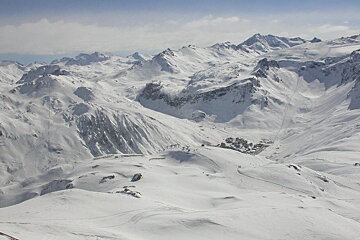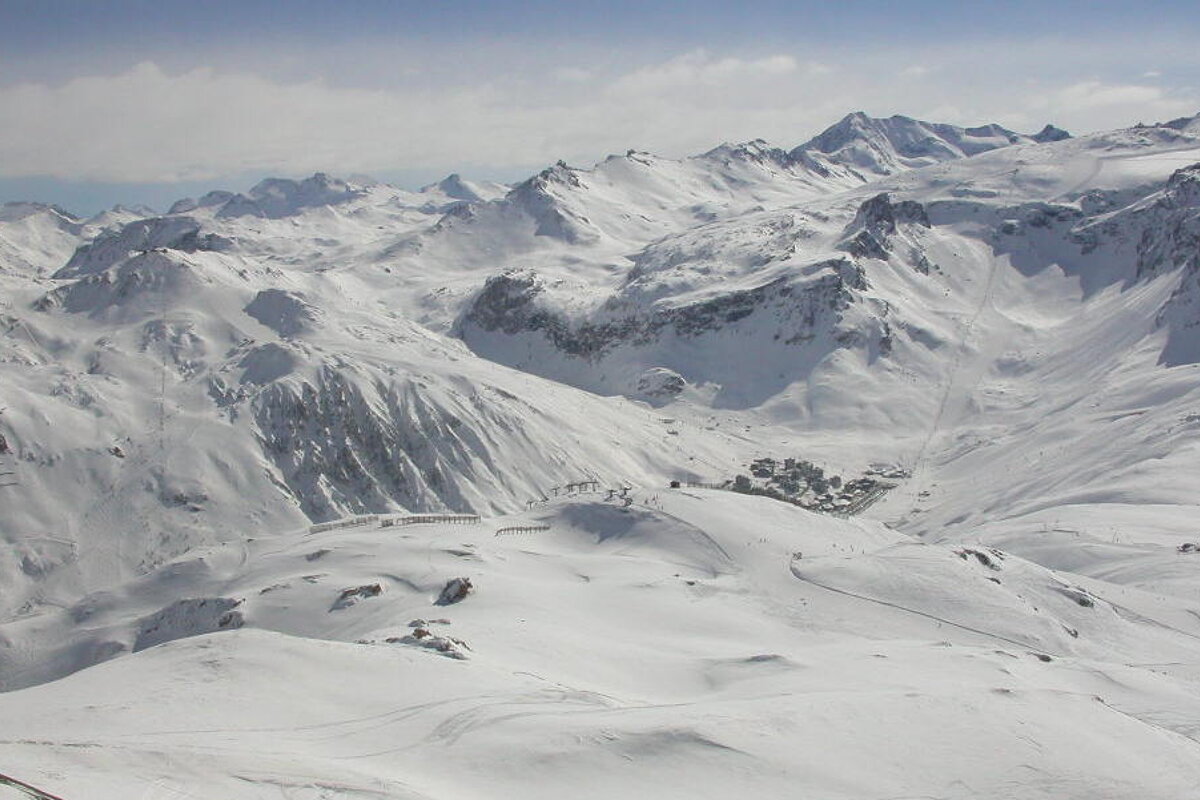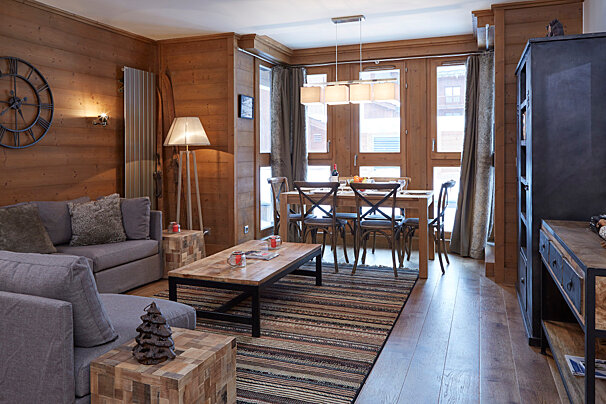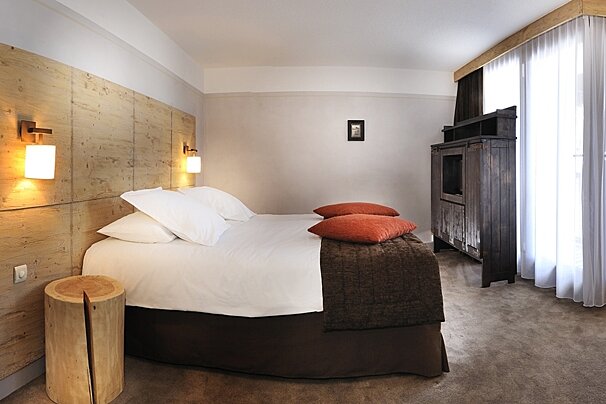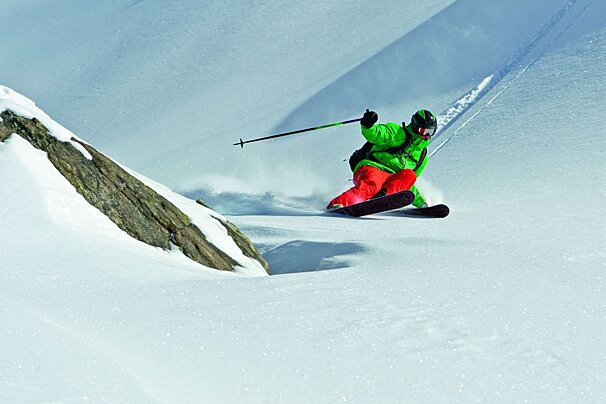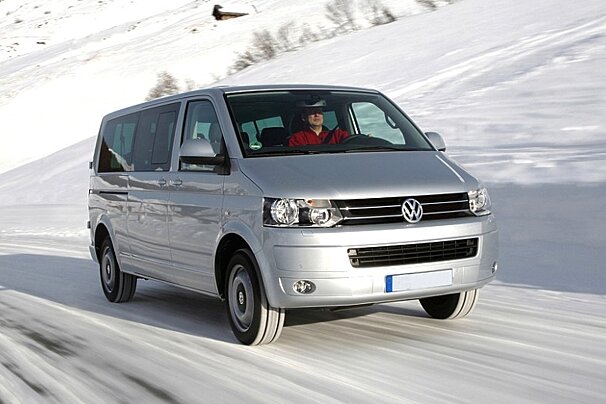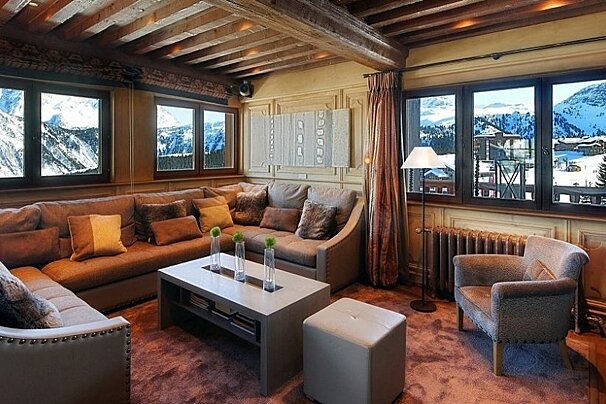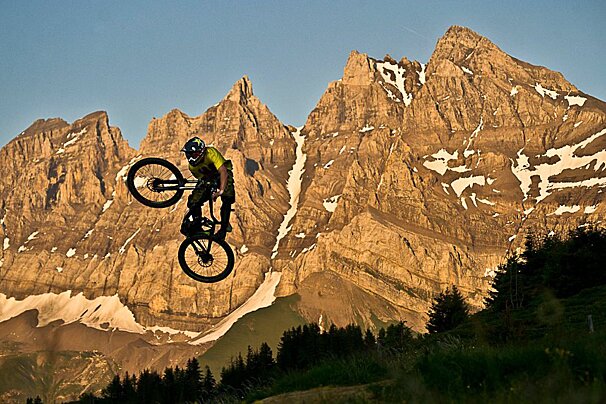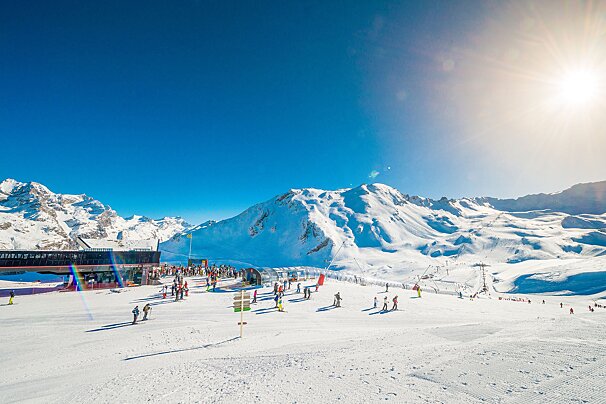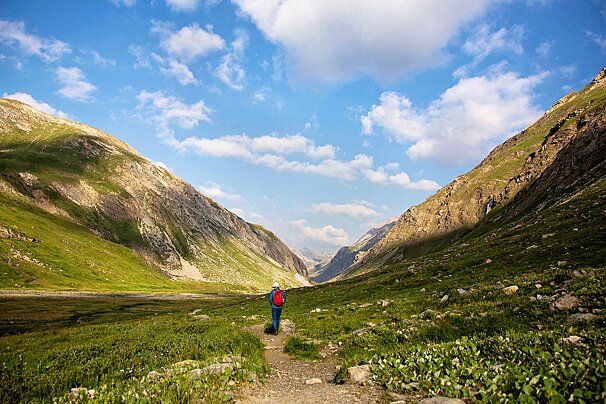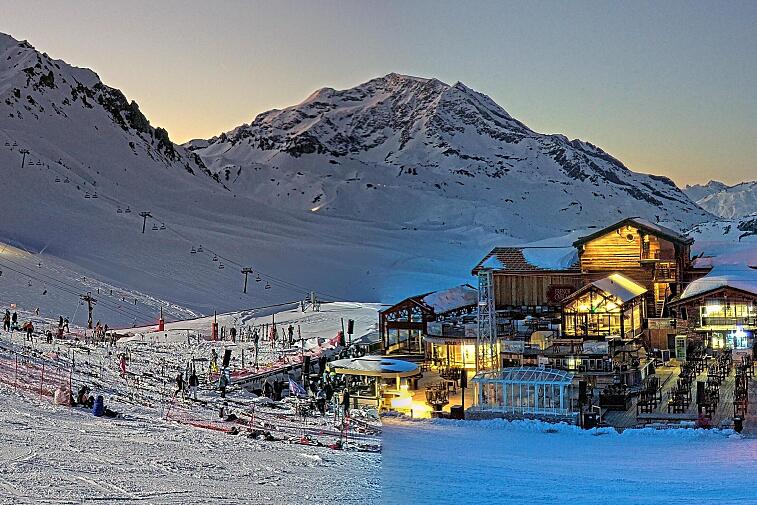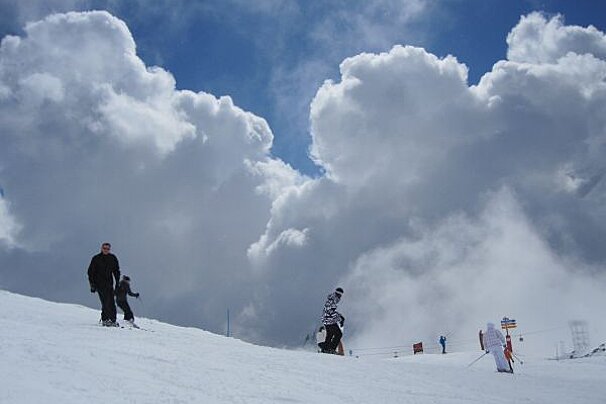Ski Area in Val d'Isere
Discover the best of the Val d'Isere ski area
The combined ski domain of Val d’Isère and neighbouring Tignes, with its modern lift system and wide range of pistes, is a ski destination that will suit everyone.
The main things to know about the Val d'Isère ski area are:
Part of one of the largest ski areas in Europe
Joined with neighbouring Tignes, it offers around 300km of marked pistes.
Exceptional snowfall
Snow coverage tends to be one of the best in Europe meaning good conditions until the beginning of May.
Charming chocolate-box accommodation
Stone and wooden-clad chalets, shops and hotels makes it one of the most authentic and beautiful French ski resorts.

Val d'Isère ski area
Val d'Isère is a village with a reputation as one of the most beautiful French ski resorts.
The three areas to become familiar with are:
- Le Solaise
- Bellevarde
- Le Fornet
Le Solaise
- central skiing area and very popular, meaning at times it can be the busiest
- the best area for beginner and intermediate skiers and is divided into three smaller sections: Glaciers Bowl, L and Mattis
- Madeleine, Arcelle and Manchet pistes = beginner and intermediate level slopes, often busy with lessons
- Tête de Solaise/Plan is the run back down to the village, recommended for intermediate and advanced skiers only
- Solaise is easily accessible from the town centre by the Solaise cable car or the Solaise Express high-speed chairlift, and most of the ski schools meet at the bottom of this area
Bellevarde
- gentle rolling pistes to get the legs warmed up then head over to the Bellevarde side of the mountain
- normally a place for fantastic snow and only a few skiers (including some beginners), with nice conditions all day
- wide range of skiing
- slopes facing three different directions in a triangular shape bowl
- East facing slopes face Val d’Isère itself and include Épaule du Charvet and the ex-Olympic Face which are steep pistes reserved for good skiers only
- Santons is classified as a blue run for intermediates, but be careful on this slope as it runs through a narrow valley and can get extremely busy and full of moguls by the end of the day
- West/North West facing slopes offer an excellent view of the Grande Motte, Grande Casse and Mont Blanc
- accessible via the Olympique cable car or the high-speed Bellevarde Express chairlift from the town centre
Le Fornet
- Quiet part of Val d'Isère and has some easy long, open and often empty pistes
- guaranteed good snow since it has glacier skiing up to 3,456m.
- 1,500m of vertical descent along blue runs all the way from the top of the glacier to the bottom of the resort at 1,930m
- Cascade red piste (off the top of the Cascade chairlift) always seems to be in top-notch condition.
- some of the most easily accessible and best off-piste, with runs like Point Pers and Col Pers
- perfect for all ages and abilities. As and when the snow is falling there's fun to be had.
There is a vast choice of slopes in the high Alps where intermediate skiers and boarders can sample the stunning views and learn from those on the steeper pitches, on the bumps and in the snowpark.
With various different beginner areas and the challenging steep and deep runs there is something for every level of skiing ability.

Tignes ski area
The main resort of Tignes sits on the edge of Le Lac at an altitude of 2,100m, and the lower villages still boast altitudes of 1,550m and 1,850m. Above all of this is the Grande Motte Glacier which rises to a lofty 3,450m and is accessible not only during winter but in the summer too - yes, you can come summer skiing in Tignes.
Beginners are highly unlikely to leave the slopes of Val d'Isère to travel here, but for intermediates and advanced skiers and snowboarders the areas to explore are numerous. Tignes has a number of extremely challenging and advanced pistes, with a host of 'naturide' (ungroomed) black runs, steep black runs and some reds verging on being a black.
The Tignes ski area can be split into four areas:
- La Grande Motte Massif
- Palet/L'Aiguille Percée
- Tovière
- Les Brévières
The Grande Motte
The highest massif; a mass of rock, ice and permanent snow cover on the glacier at the highest point, which is open in every season. Accessed by either the Funicular railway or by taking the Lanches and Vanoise chairlifts, then finally the Grande Motte cable car.
L'Aiguille Percée/Palet
Accessible from Val Claret by the Tichot chairlift and from Le Lac by the Palafour. There are a number of cruisey intermediate blue and red runs here. For spectacular views head up the Aiguille Percée and enjoy the famous 'Eye of the Needle' rock formation and take the lovely long Corniche blue piste down to the top of the Chaudannes chairlift.
Tovière
Links with Val d’Isère, and is accessible by taking the Aeroski bubble from Tignes-le-Lac or the Tufs and Bollin chairlifts from Val Claret. You can enjoy a number of gentle blues and more challenging reds, particularly the Combe Folle which leads into the mogul covered, steep black Trolles piste down into Le Lac.
Les Brévières
The lowest part of the Tignes ski area, Les Brévières is a nice little sun trap from early on in the morning, making it the perfect resting point for a spot of lunch on a sunny day, especially in the warmer months of the season. The pistes in this area mainly consist of easy wide blues and slightly more challenging red runs. There is some lovely off-piste skiing to access here, handy in a white-out as there's plenty of trees.
Snowpark
There is also a snowpark at the top of the Grattalu chairlift, giving riders the chance to try their hand at some freestyle jumping, rails and big air. The features here are not that big, so it's a good place to head to if you've not much park riding experience.
Probably the best freestyle feature that Tignes has to offer is its halfpipe. This sits at the base of the Les Lanches chairlift at the top end of Tignes Val Claret. The pipe itself is impressive, not many resorts in France have one.
Summer skiing
Rather uniquely Tignes also has a vibrant summer ski scene with snowparks up on the glacier, well-groomed pistes as well as gentle nursery slopes. It attracts ski teams, racers and freestyle skiers and snowboarders from around the world.
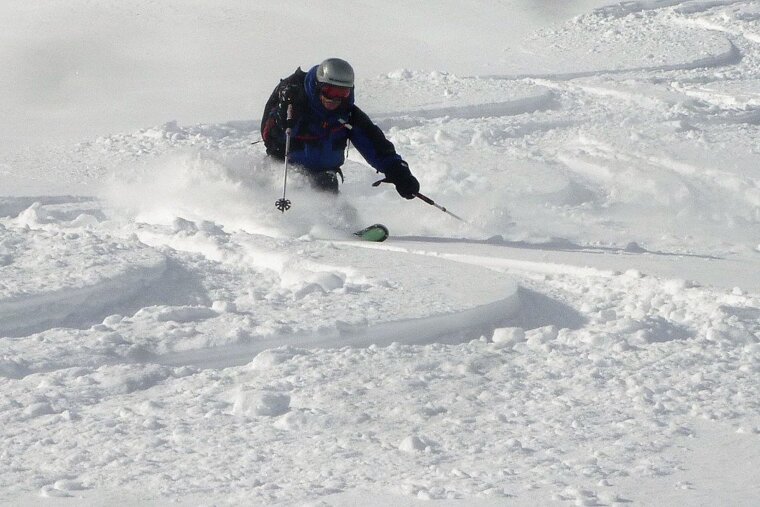
When is the ski area open in Val d'Isère?
Snow conditions permitting, the ski season in Val d'Isere usually runs from early December until the end of April.
That strong southern sun means the snow can turn from ice to slush pretty quickly if you're here late in the season. But whenever you choose to come, the local pisteurs will make the best of the conditions and groom the pistes to perfection.
If you're coming early or late in the season
It's a good idea to check which lifts are open at Val d'Isere. You might want to check the Val d'Isere webcams too, for an up-to-the minute view of conditions on the ground.
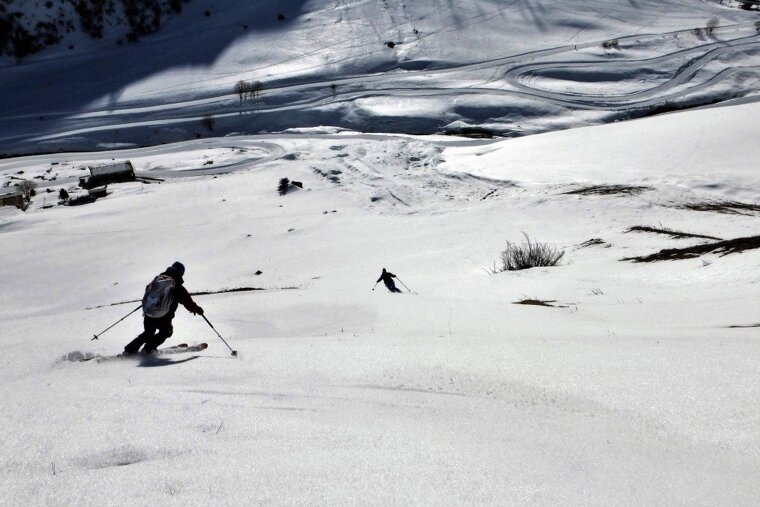
Advanced areas in Val d'Isère
Val d'Isère has a number of challenging steep and deep pistes that are great for the advanced skier.
Solaise
- Cugnai is a nice steep piste that is usually in the best condition in the morning, but can be closed due to avalanche risk
- Arcelle can be a bit crisp first thing, so it's worth waiting until late morning or early afternoon
- pistes A, M and S run down to the Solaise area, S is particularly challenging and is often closed
Le Fornet
- advanced skiers will probably cover this area quite quickly, but it's worth the trip for the excellent conditions
- Forêt is a black run through the trees
- Signal is a steep red at the top of the Signal drag lift
Bellevarde
- numerous options for steep descents down to Solaise and La Daille. Conditions are usually better in the morning here
- Face has recently had a makeover to ease congestion on the run
- Épaule du Charvet has steep moguls and is only open when conditions allow
- OK or Orange are challenging runs down to La Daille
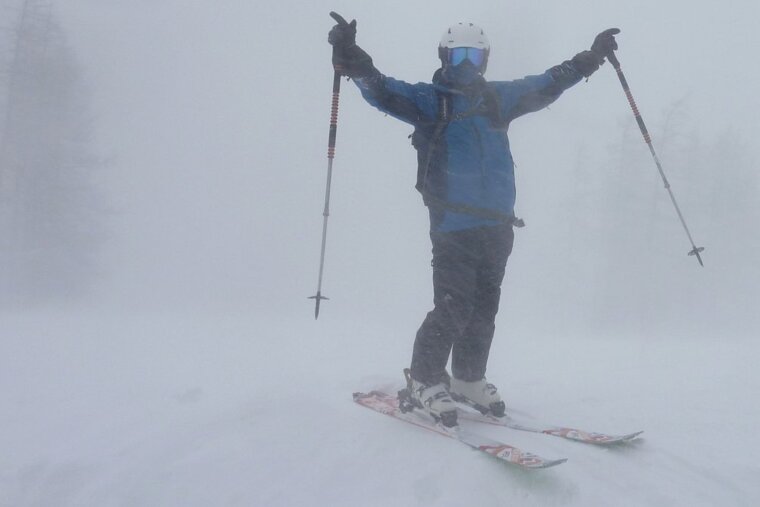
Bad weather areas in Val d'Isère
When the weather closes in one of the best areas in Val d'Isère during poor weather conditions is the top of the La Daille area, as the trees running down the pistes will provide much better visibility.
Alternatively, head to the lower slopes of the Solaise like 'Piste M', which are also treelined, but can often be busy.
Another great area to head to is Le Fornet as again, there are plenty of trees lining the pistes from the top of the cable car, giving better visibility and definition.
Bear in mind that even if the valley itself is shrouded in all-encompassing fog, the top of the mountains can be bathed in glorious sunshine. Best thing to do is to check out our Val d'Isere webcams.
Also don't forget that if it’s lashing down with rain in the valley, that normally means it's snowing up top. If you can take advantage of days like these, you'll often have great stashes of fresh powder all to yourself.

Beginner areas in Val d'Isère
There are two nursery areas in Val d’Isère – one in the centre of the resort and one in La Daille at the bottom of the pistes.
Slopes for beginners in Val d'Isère
Beginners area with three free lifts accessing two green pistes and a gently sloping area that's perfect for building confidence.
Slopes for beginners in Bellevarde and La Daille
Smaller nursery area with two short lifts at the bottom of the Bellevarde funicular. A good beginner route here is from the top of the Borsat Express down to the Fontaine Froid via the gentle green run Génépy.
Slopes for beginners in Solaise
Several wide and easy green pistes here for practising what you've learnt in your lessons.
Take the Solaise Express, then a short rope pulley takes you across the flat piste and you'll be able to access the Glacier and Madeleine chairs. There's a designated beginner area over here and the runs around these chairs are nice and easy.
Slopes for beginners in Le Fornet
Take the free shuttle and then the Fornet cable car followed by the Vallon de l'Iseran bubble to the base of the glacier. From here you have a selection of rolling blue runs around the bubble and back down to the resort. The pistes are quieter here, but just as good.

Off-piste areas in Val d'Isère
Given the size of the resort, it's no surprise there's plenty of places to head to on a powder day.
Solaise
Slightly less on this side of the mountain but the Lavancher Couloir from the top of the Solaise Express is worth a look.
Also from the start of Piste L follow the Iséran route to the start of the Mattis and you can drop into the off-piste anywhere along here, the closer you get to Mattis the steeper the drop in.
Bellevarde
This side has the most off-piste to offer, with three well known off-piste areas:
- Banana - very large vertical drop, snow heats up quickly so head here early
- Charvet Tour - best known off-piste in Val, again head here in the morning, it's south-facing and prone to sliding
- Face du Charvet - lots of challenging off-piste, high avalanche risk and stay high to avoid cliffs. The route down is full of long steep descents
La Daille
In La Daille you can enjoy a few off-piste tracks and fresh powder. There is extensive off-piste around this area which involves no walking or climbing, simply powder practise.
Le Fornet
Tends to be the quieter side of the Val d'Isère mountains, so the off-piste here can often be left untouched, providing fresh powder and plenty of fun.

Snowparks in Val d'Isère
The Val Park
In the Bellevarde area, the park lies in the centre of the Bellevarde bowl just under the Mont Blanc chairlift and is serviced by the drag tow that runs up the side of the slalom course.
Set out in clearly defined sections according to difficulty level - green, blue, red and black.
There are around 25 features including boxes, banana rail, wall, barrels, spine and there is also a section designed for riding rails with easy boxes for beginners. Some of the kickers here can be especially shaped for shoots and competitions, so they change constantly.
There is also a small boardercross at the Borsat Express, perfect for the family.
More inspiration...
Perfect for mixed ability groups and families, the Val d'Isère ski area offers a range of pistes. With wide open runs, some steeper skiing and tree-lined pistes, you're sure to find your favourite piste this winter.
Take a look at this year's ski pass prices or, if you're not sure which pass to buy.



